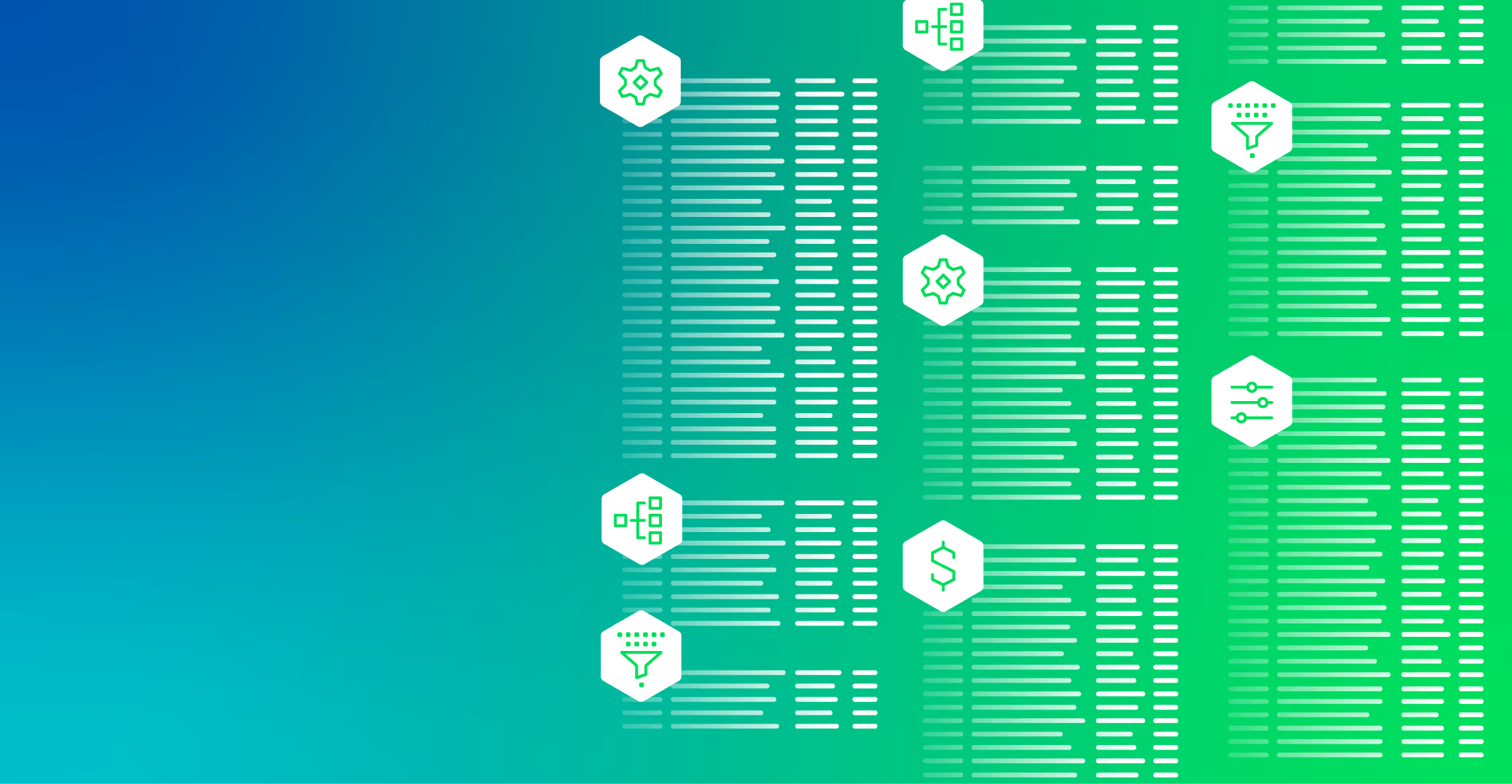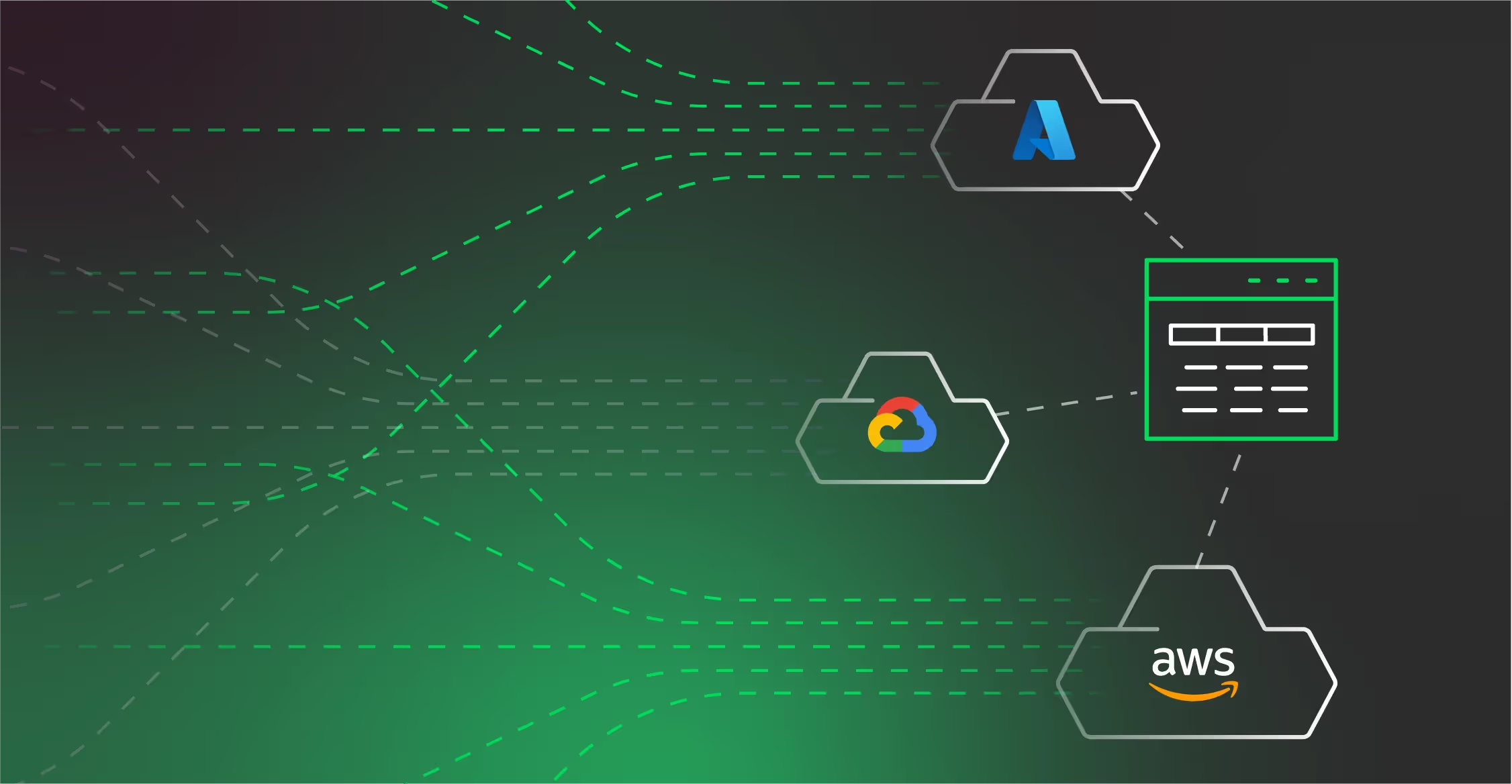Choosing the right scaling strategy is one of the toughest challenges engineering teams face. In fact, 76% of organizations say their current infrastructure can’t scale to meet future needs. Vertical scaling (scaling up) adds more CPU, RAM, or storage to one server, while horizontal scaling (scaling out) distributes workloads across multiple servers for near-limitless growth. Each approach carries trade-offs in cost, performance, and complexity, making it crucial to know when — and how — to apply them.
This guide offers clear definitions, real-world examples, and practical insights to help you scale efficiently and avoid costly missteps.
| Key Takeaways • Vertical scaling improves a server’s performance quickly but can become costly and limiting as traffic increases. • Horizontal scaling spreads workloads across multiple servers, enabling near-unlimited growth but requiring more complex architecture and management. • Hybrid scaling combines both. It starts with vertical upgrades, then moves to horizontal distribution as systems and teams mature. • Cost and performance is a tradeoff that must be considered. Vertical scaling is less expensive and less complex initially, while horizontal scaling is more efficient and robust in the longer term. • Scaling strategy determines business results, driving reliability, cost, and a firm’s ability to scale without interruption. |
Scaling Fundamentals – Critical Business Decisions

Scaling is the process of increasing a system’s capacity without sacrificing performance. For software teams, it’s about handling more users and requests while maintaining fast, reliable response times. Choosing the right scaling strategy is critical — poor decisions can triple costs and introduce unnecessary operational complexity.
Think of it like running a restaurant. Vertical scaling is adding bigger ovens and more burners to the same kitchen — simple, but limited by space. Horizontal scaling is opening additional kitchens and distributing customers across them for greater capacity. These two models — scale-up and scale-out — capture the core trade-off in infrastructure design.
Why Scaling Strategy Matters
A scaling strategy directly affects three core dimensions: performance, cost, and reliability. When planning falls short, bottlenecks inevitably emerge. In fact, 64% of engineers cite performance issues during scaling as a major stress point in production.
Industry data reinforces this struggle—while 73.8% of projects meet performance benchmarks, only 48% succeed across scope, budget, and schedule. Sustaining performance under growth remains one of the hardest problems in systems engineering.
The trade-offs between vertical and horizontal scaling are clear. Vertical scaling offers speed and simplicity but becomes expensive at higher tiers. Horizontal scaling drives long-term efficiency and resilience but requires thoughtful design and experienced teams. These dynamics play out across industries—from streaming platforms to e-commerce systems to modern distributed databases.
The Two Scaling Approaches
Vertical scaling delivers quick performance gains with minimal architectural changes, making it ideal for early growth or smaller systems. However, costs rise sharply at higher instance tiers, and capacity eventually plateaus. Horizontal scaling, on the other hand, provides sustained efficiency and resilience by distributing workloads across multiple nodes — but it demands careful design, orchestration, and operational maturity.
These trade-offs appear across every industry — from the global streaming services that handle billions of daily requests to e-commerce platforms balancing surging seasonal traffic and distributed databases designed for high availability at scale.
Vertical Scaling (Scale Up) – Power Through Hardware

Vertical scaling, or scaling up, enhances a single server’s capacity by increasing CPU, memory, or storage. It’s a straightforward option — especially for legacy systems, monolithic applications, and latency-sensitive workloads that benefit from centralized resources.
However, this simplicity comes at a price. Costs rise quickly as hardware tiers increase, and cloud instances can run three to five times more expensive for incremental performance gains. Vertical scaling also introduces operational risk: a single point of failure and potential downtime during major upgrades.
Cost Progression Example
| Server Type | vCPUs | RAM | Approx. Monthly Cost* | Relative Performance |
| Small | 2 | 8 GB | $35–$50 | 1× |
| Medium | 4 | 16 GB | $70–$110 | 2.5× |
| Large | 8 | 32 GB | $150–$220 | 5× |
| X-Large | 16 | 64 GB | $280–$350 | 9× |
| 2X-Large | 32 | 128 GB | $550–$700 | 15× |
Vertical Scaling Economics
Vertical scaling can deliver quick performance gains, but those returns diminish over time. Adding CPU, memory, or storage boosts speed initially, yet each upgrade yields smaller improvements. It’s a practical choice for moderate or predictable workloads, but as demand grows, efficiency drops.
Overprovisioning and inefficient scaling can inflate cloud costs by up to threefold, making long-term dependence on vertical scaling both costly and unsustainable.
When Scale-Up Works Best
Despite its limits, vertical scaling excels in certain environments:
- Databases: Stack Overflow has long relied on powerful database servers. With only a few optimized machines, it serves millions of developers daily with sub-50ms query times.
- Low-latency workloads: Discord leverages vertically scaled infrastructure for real-time voice and chat, handling millions of concurrent connections while keeping latency under 200ms.
- Legacy or monolithic apps: Many enterprises still depend on systems not designed for distributed scaling. Scaling up buys time without costly rewrites.
- Predictable workloads: Internal tools or systems with stable demand often benefit from vertical upgrades rather than distributed complexity.
Vertical scaling is suitable for databases, real-time apps, and legacy workloads where low latency and simplicity matter more than rapid growth. However, you will trade quick wins for rising long-term costs.
Horizontal Scaling (Scale Out) – Growth Through Distribution

Horizontal scaling, or scaling out, expands capacity by adding servers that share workloads instead of relying on a single powerful machine. By distributing requests across multiple nodes, platforms can handle millions of users without hitting vertical limits — unlocking near-linear growth potential.
To work effectively, applications must be stateless or manage state externally. Load balancers distribute traffic evenly, while sharding and replication maintain data integrity across nodes. This approach allows teams to scale capacity using cost-effective, commodity servers — lowering the cost per user as the system grows.
The following table compares several common VM sizes, showing approximate monthly costs per instance based on current U.S. pricing.
Cost Characteristics
| VM Size / Specs | AWS (General Purpose) Estimate* | Azure (D / D-series) Estimate* |
| 4 vCPU / 16 GB | ~$100-$150/month | ~$110-$160/month |
| 8 vCPU / 32 GB | ~$200-$300/month | ~$220-$320/month |
| 8 vCPU / 64 GB | ~$350-$450/month | ~ $0.384/hr ⇒ ~$280/month for 730 hrs ( |
| 32 vCPU / 128 GB | ~$900-$1,200/month (depending on instance type) | Similar ballpark, maybe ~$1,000-$1,400 depending on region/specs |
Examples:
- Netflix: Netflix utilizes horizontal scaling, running on thousands of AWS servers and its own content delivery network (Open Connect). Handling 15% of global internet traffic and 1B+ monthly viewing hours, it proves scale-out can serve massive, distributed audiences.
- Uber: Uber depends on horizontal scaling to match riders and drivers in real time. Processing millions of trips daily across 70+ countries, its microservices architecture enables rapid replication, low-latency load distribution, and reliable sub-second matching worldwide.
Horizontal Scaling Architecture
Horizontal scaling distributes workloads across multiple servers, allowing systems to handle more traffic by sharing the load. Think of it like a team dividing tasks — each member takes on part of the work, so no one gets overwhelmed. A load balancer directs incoming requests evenly, keeping performance steady and preventing bottlenecks.
For this model to work, applications need to be stateless, relying on distributed caches or replicated databases to maintain state. Data handling is key: sharding divides data into smaller, manageable segments for balanced performance, while replication ensures availability and fault tolerance. Together, these techniques enable systems to scale seamlessly across hundreds—or even thousands—of servers without compromising reliability or speed.
Scale-Out Implementation Reality
Transitioning to horizontal scaling introduces significant technical and operational challenges. Applications often need to be refactored to remove stateful dependencies — a process that can take weeks or even months. Database partitioning, caching layers, and messaging systems must be designed with care to maintain consistency and performance.
For organizations moving from monoliths to microservices, the migration can span six to twelve months, involving extensive testing and architectural changes. Once deployed, operations require greater vigilance: monitoring clusters, tuning load balancers, and managing failovers become routine.
Despite the added complexity, the payoff is clear. Horizontal scaling delivers global availability, built-in redundancy, and virtually unlimited growth potential — the very model that powers large-scale platforms like Netflix and Uber.
Direct Comparison – Which Approach When

Choosing between vertical and horizontal scaling depends on cost, performance, and growth trajectory. Both methods extend capacity, but the trade-offs vary significantly.
Comparison Table: Vertical vs. Horizontal Scaling
| Factor | Vertical Scaling (Scale Up) | Horizontal Scaling (Scale Out) |
| Implementation Speed | Fast (hours to resize or upgrade server) | Slower (weeks to re-architect, configure load balancers) |
| Growth Limits | Limited by the hardware ceiling | Virtually unlimited |
| Cost at Scale | Exponential at high tiers | Linear improves cost per user |
| Downtime Risk | Requires restart/maintenance | Minimal with load balancing |
| Fault Tolerance | Single point of failure | Redundant across nodes |
| Team Expertise | Minimal (basic sysadmin skills) | High (distributed systems, DevOps) |
| Best for | Databases, legacy apps, predictable workloads | Global apps, real-time platforms, microservices |
| Performance Gains | Immediate boost on a single node | Scales with traffic distribution |
| Break-even Scale | Optimal below ~100K users | Essential beyond ~1M users |
Performance and Cost Analysis
Vertical scaling delivers rapid performance gains on a single server, making it well-suited for latency-sensitive workloads such as databases. Doubling CPU cores from 8 to 16 can nearly halve query times — but it also doubles costs. As instance sizes increase, the price-to-performance ratio declines, and upgrade-related downtime becomes a growing risk.
Horizontal scaling, by contrast, becomes more cost-efficient at scale. For example, 10 servers might cost $2,500 per month to support 500,000 users, while 50 servers at $12,500 can handle 5 million — reducing the cost per 1,000 users from $10 to just $2. The break-even point typically appears between 100,000 and 250,000 users, after which horizontal scaling becomes the only practical long-term strategy.
Performance and Cost Comparison Matrix
| Scaling Method | Typical Performance Gains | Cost Pattern | Limitations | Best Fit For |
| Vertical Scaling (Scale Up) | Immediate boost (e.g., doubling CPU halves query time) | Costs increase steeply at higher tiers | Hardware/cloud size limits; single point of failure | Small to mid-size apps, latency-sensitive workloads |
| Horizontal Scaling (Scale Out) | Linear improvements as nodes are added | More predictable and efficient per-user cost | Requires distributed architecture, coordination overhead | Large-scale apps, global users, real-time platforms |
Vertical wins: predictable workloads, latency-sensitive apps, and legacy systems.
Horizontal wins: global streaming (Netflix), ride matching (Uber), or SaaS platforms requiring high availability.
Decision Criteria and Thresholds
Choosing the right scaling strategy depends on four factors.
- User Count: Vertical scaling is efficient under 100K users; beyond 1M, horizontal scaling is essential.
- Team Size & Skills: Small teams benefit from vertical simplicity. Larger teams with distributed expertise can manage horizontal scaling’s complexity.
- Application Type: Databases and legacy apps lean toward vertical scaling. Stateless web services, microservices, and streaming systems require horizontal scaling.
- Growth Rate: Slow, predictable growth favors scale-up, while rapid or global expansion demands scale-out early.
Hybrid scaling strategies are the norm rather than the exception. Many organizations begin with vertical upgrades to gain quick performance improvements, then transition to horizontal scaling for greater resilience and cost efficiency. Companies like Shopify and Airbnb followed this path—starting with monolithic architectures before evolving toward microservices and distributed systems.
In essence, vertical scaling offers simplicity, while horizontal scaling delivers sustainable, long-term growth.
Real-World Use Cases and Examples
Scaling decisions are best understood through real-world application. Different industries face distinct challenges — some require elasticity to handle unpredictable demand, while others prioritize low latency or global availability.
The examples below illustrate how scaling strategies evolve in practice. To clarify the contrasts across industries, the following table summarizes common scaling approaches and recommendations.
Real-World Use Case Scenarios with Recommendations
| Scenario / Industry | Recommended Approach | Why It Works Best |
| Relational databases (finance, ERP) | Vertical | Low-latency queries benefit from stronger single nodes |
| E-commerce apps (Shopify-scale) | Hybrid → Horizontal | Start vertical, move to horizontal for traffic surges |
| Global streaming (Netflix, YouTube) | Horizontal | Needs global distribution and fault tolerance |
| Startups / MVPs | Vertical (initial) | Faster, cheaper setup with limited resources |
- Shopify (E-commerce): Began with vertical scaling, then moved to horizontal scaling on AWS. Now supports 1.7M+ merchants and $175B+ GMV annually.
- Instagram (Social Media): Adopted horizontal scaling early with sharded databases and load balancing. Grew to 30M users in two years, later 1B+ monthly actives.
- NASDAQ (Financial): Relies on vertical scaling with high-performance servers, processing tens of billions of messages daily at sub-millisecond latency.
- Slack (SaaS): Uses a hybrid model by scaling up queues and scaling out services. Reported 10M daily users by 2019 with steady growth since.
Growth Stage Scaling Patterns
Scaling typically evolves alongside business growth. Early-stage startups often rely on vertical scaling for its simplicity and cost efficiency — adding CPU, RAM, or storage can handle small workloads without major architectural changes.
As demand increases, however, vertical scaling reaches performance and cost limits. Many teams adopt hybrid models, scaling databases vertically for stability while scaling web and application layers horizontally for flexibility.
Once user bases exceed the million mark, horizontal scaling becomes indispensable. Load balancing, distributed databases, and auto-scaling clusters deliver the resilience and elasticity required for large-scale systems — a progression seen in companies like Shopify and Slack as they transitioned from vertical to hybrid architectures.
Industry-Specific Approaches
Different industries approach scaling based on their unique performance demands and traffic patterns. E-commerce platforms, for instance, scale out aggressively during peak shopping seasons and then scale back to control costs.
Social media networks prioritize elasticity from the start, using distributed systems, sharded databases, and global load balancing to manage unpredictable viral growth.
In contrast, financial institutions such as NASDAQ often rely on vertical scaling with high-performance, specialized servers to achieve microsecond-level latency. SaaS providers typically adopt a hybrid strategy — scaling up cores for consistency and scaling out for reach. Slack exemplifies this balanced approach.
Implementation Guide – How to Actually Scale

Scaling takes more than theory — it requires execution. Vertical and horizontal approaches each follow distinct implementation paths, with their own timelines, risks, and monitoring requirements.
Vertical Scaling Implementation
Vertical scaling is fast and straightforward. It begins with a short assessment (1–2 weeks) to identify CPU, memory, and storage bottlenecks.
Once the ideal server type or VM size is selected, the planning phase moves quickly—most cloud providers allow instance resizing within a few hours. A brief validation period (1–2 days) follows to confirm that the new configuration performs as expected.
From a cloud cost optimization view, the goal is to balance performance and efficiency. Regularly review instance sizes using provider calculators and track real-time usage to avoid overpaying for idle resources.
Common pitfalls include downtime during upgrades, hardware limitations, and overspending. Schedule changes during off-peak hours, test workloads before scaling, and always right-size resources to match demand.
Finally, monitor key metrics like CPU, memory, I/O, and latency. Maintaining usage below 70% ensures headroom for traffic spikes, preserves performance stability, and keeps costs predictable.
Horizontal Scaling Implementation
Horizontal scaling involves deeper architectural changes and longer timelines.
The assessment phase (2–4 weeks) identifies components that must become stateless or distributed. The infrastructure setup (2–6 weeks) then provisions load balancers, networking, and auto-scaling groups to support scaling out.
Next, application changes (4–12 weeks) focus on refactoring — implementing database sharding, redesigning sessions, or decomposing monoliths into microservices. The rollout phase (2–4 weeks) gradually adds new servers while monitoring real-user traffic for stability and performance.
Common challenges include inconsistent data replication, uneven load balancing, and coordination issues across distributed systems. To mitigate these risks, use reliable replication strategies, implement automated health checks, and ensure the team deeply understands distributed architectures.
When done right, horizontal scaling delivers high availability, elasticity, and long-term cost efficiency — especially at large user scales.
Cost Analysis and ROI Planning
Scaling decisions have a direct impact on a company’s five-year total cost of ownership (TCO) and overall return on investment (ROI).
Vertical scaling provides fast results with relatively low initial costs, but expenses rise sharply as workloads increase. Horizontal scaling demands more upfront investment in infrastructure and expertise, yet it becomes increasingly cost-efficient at larger scales, delivering better long-term ROI and operational flexibility.
5-Year TCO Projections
| User Scale | Vertical (5-Year) | Horizontal (5-Year) | Notes |
| 10K users | $120K | $150K | Vertical cheaper early |
| 100K users | $400K | $350K | Break-even point |
| 1M users | $1.8M | $1.2M | Horizontal cost advantage |
| 10M users | $12M | $6M | Vertical unsustainable |
*Based on cloud instances costing $500–$3,000/month over five years
Total Cost Analysis
Understanding costs requires looking beyond infrastructure. Licensing, downtime, development, and operations all contribute significantly to the long-term picture and can alter the ROI of each scaling strategy.
- Licensing (10–15%) – Vertical scaling often raises per-core licensing fees for databases and middleware.
- Downtime (5–10%) – Hardware upgrades risk outages, while horizontal scaling requires careful rollout planning.
- Development (15–20%) – Horizontal scaling usually demands code refactoring and distributed system skills.
- Operations (10–20%) – Cluster management, monitoring, and failover add recurring overhead.
These factors explain why vertical scaling works for smaller workloads, but horizontal scaling becomes more efficient as user counts pass the 1M mark.
ROI and Budget Planning
Planning for ROI requires a clear understanding of when your investments will generate value and how to allocate budgets effectively. The timeline for realizing returns varies depending on the scaling strategy employed, and as the organization grows, spending priorities should be continuously reassessed to ensure alignment with business objectives.
ROI timelines:
- Vertical scaling: 12–18 months, best for <100K users.
- Horizontal scaling: 24–36 months, savings compound as scale grows.
Budget allocation:
- Startups (<100K users): 60% infra, 40% development.
- Growth (100K–1M): 50% infra, 30% DevOps, 20% licensing.
- Enterprises (1M+): 40% infra, 40% operations, 20% compliance/redundancy.
This phased approach aligns expenditures with company growth, helping prevent over-provisioning while maintaining readiness for increased workloads. By synchronizing costs with scaling needs, organizations can achieve operational efficiency, system resilience, and a stronger long-term ROI from their scaling strategy.
Decision Framework and Next Steps

Effective scaling decisions require a systematic approach. Begin by identifying current bottlenecks, then evaluate growth projections, and finally select a strategy that aligns with both immediate requirements and long-term architectural goals.
To put this into practice, the following decision framework provides concrete thresholds and actionable recommendations:
Decision Framework with Specific Criteria
| Criteria / Threshold | Recommended Scaling Approach |
| < 100K users / low daily traffic | Vertical (simpler, cost-effective) |
| 100K–1M users / moderate growth | Hybrid (start with vertical, prepare for horizontal) |
| > 1M users / rapid scaling required | Horizontal (distributed, resilient) |
| High latency sensitivity | Vertical preferred |
| Global traffic/uptime critical | Horizontal mandatory |
Decision Process
To make smart decisions about improving performance, follow this simple three-step process:
- Assess Current State: Look at your current workloads and see how your servers are doing. If you notice that the CPU usage often goes over 70% or memory usage is consistently around 80% or higher, it might be time to consider upgrading your resources.
- Analyze Growth Projections: Check growth expectations. If you expect user numbers and traffic to triple within the next year to year and a half, consider horizontal scaling as a more manageable option.
- Choose Approach: Use thresholds to decide:
- <100K users or steady workloads → vertical scaling.
- 100K–500K users or unpredictable spikes → hybrid model.
- 500K+ users or global distribution → horizontal scaling.
This decision-making process helps us scale in a way that makes sense for both our technology and our business needs.
Implementation Planning
An implementation roadmap varies by company stage:
- Startups (0–100K users) – Focus on vertical scaling with incremental hardware upgrades. Timeline: 1–3 months for upgrades and tuning.
- Growth stage (100K–500K users) – Adopt a hybrid approach, combining vertical optimization with pilot horizontal scaling (e.g., load balancers, containerization). Timeline: 3–6 months.
- Enterprise scale (500K+ users) – Prioritize horizontal scaling with distributed architecture, monitoring, and fault tolerance. Timeline: 6–12 months, depending on complexity.
Common pitfalls include scaling prematurely, overlooking hidden costs, or failing to maintain proper monitoring. Scale only when usage consistently exceeds capacity, account for all overhead expenses in your budget, and track key metrics such as response time, error rate, and cost per user.
Applying this framework helps organizations make cost-effective, future-ready scaling decisions. By following these principles, businesses can mitigate risk, maximize ROI, and build infrastructure that adapts seamlessly to evolving demand.
Conclusion
Selecting the right scaling strategy is a crucial decision that directly affects performance, costs, and long-term system reliability. A well-chosen approach can support 5–10× growth while maintaining operational efficiency.
Vertical scaling is often the simplest and most cost-effective starting point. However, its inherent limits make horizontal scaling essential for sustained growth and resilience.
To proceed effectively, organizations should follow three steps: assess current bottlenecks, select the scaling approach that addresses immediate needs, and design a long-term architecture that accommodates horizontal expansion.
With careful planning, businesses can control costs, sustain performance, and ensure their systems remain robust and adaptable as demand grows.
Frequently Asked Questions
What is the key difference between horizontal and vertical scaling?
Vertical scaling upgrades a single server’s resources (CPU, RAM, storage), while horizontal scaling adds multiple servers or instances for greater scalability and fault tolerance.
How do their costs compare at different thresholds?
Vertical scaling is cheaper initially but reaches hardware or cloud instance limits quickly. Horizontal scaling costs more upfront but becomes more cost-effective beyond thresholds of sustained high traffic, redundancy needs, or 70–80% resource utilization.
When is a hybrid scaling approach best?
A hybrid approach fits organizations needing quick vertical boosts, then horizontal scaling as limits appear.
What signs show it’s time to switch to horizontal scaling?
Switch when CPU, memory, or network consistently max out, upgrades no longer improve performance, or redundancy is lacking. Rising latency and reduced throughput also signal it is time for horizontal scaling.
What challenges arise in scaling, and how can they be solved?
Scaling challenges include downtime, application redesign, data consistency, and cost overruns. Solutions involve containerization, load balancing, database sharding, automation tools, and monitoring platforms to ensure scalability, resilience, and predictable costs.
References






